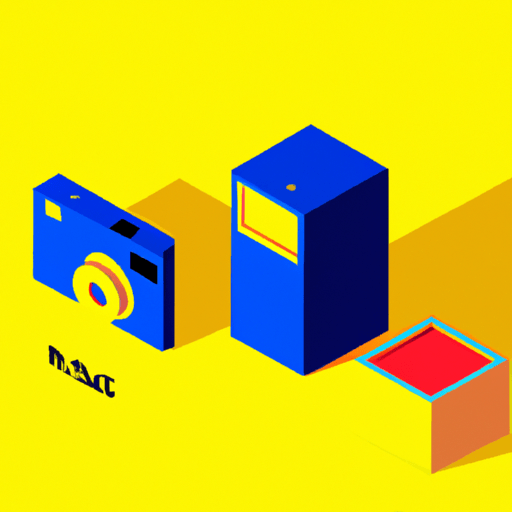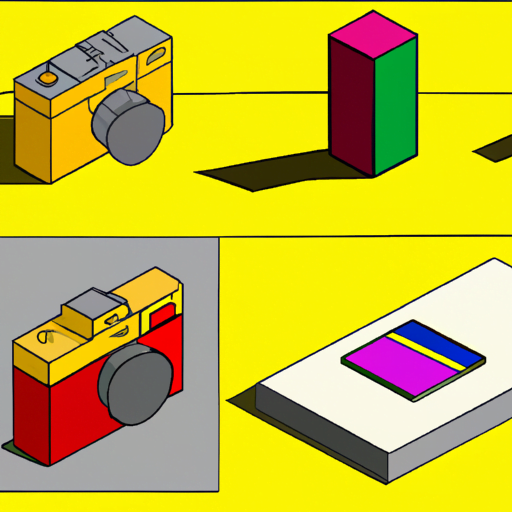
-
Table of Contents
The Rise of Isometric Design in UI/UX

Isometric design has become increasingly popular in the field of UI/UX in recent years. This unique style, characterized by its three-dimensional appearance and use of parallel lines, has gained traction due to its ability to create visually appealing and engaging user interfaces. In this article, we will explore the rise of isometric design in UI/UX, its benefits, and how it has been successfully implemented in various industries.
What is Isometric Design?
Isometric design is a method of creating two-dimensional images that give the illusion of three-dimensional space. Unlike traditional perspective drawings, isometric design uses parallel lines that are evenly spaced to create a sense of depth and dimension. This style is often characterized by its use of 30-degree angles and equal measurements along each axis.
Isometric design has its roots in technical and architectural drawings, where it was used to represent objects and structures in a way that accurately conveyed their dimensions. However, in recent years, isometric design has found its way into the world of UI/UX, where it has been embraced for its ability to create visually stunning and immersive user interfaces.
The Benefits of Isometric Design in UI/UX
Isometric design offers several benefits that make it an attractive choice for UI/UX designers:
- Visual Appeal: Isometric design adds depth and dimension to user interfaces, making them visually appealing and engaging. The three-dimensional appearance of isometric illustrations can capture the attention of users and create a memorable experience.
- Clarity and Understanding: Isometric design allows for the clear representation of complex ideas and concepts. By using isometric illustrations, designers can simplify information and make it easier for users to understand.
- Consistency: Isometric design provides a consistent visual language that can be applied across different screens and devices. This consistency helps to create a cohesive user experience and strengthens brand identity.
- Storytelling: Isometric design can be used to tell a story or guide users through a process. By creating a narrative with isometric illustrations, designers can engage users and enhance their overall experience.
Successful Implementations of Isometric Design
Isometric design has been successfully implemented in various industries, including:
1. E-commerce
Many e-commerce websites have embraced isometric design to showcase their products in a visually appealing way. By using isometric illustrations, these websites can create a sense of depth and dimension, making the products appear more tangible and enticing to potential buyers. Isometric design also allows for the clear representation of product features and details, helping users make informed purchasing decisions.
2. Gaming
Isometric design has long been used in the gaming industry to create immersive and visually stunning game environments. The three-dimensional appearance of isometric illustrations adds depth and realism to game worlds, enhancing the overall gaming experience. Isometric design is particularly popular in strategy and simulation games, where it allows players to view the game world from a unique perspective and make strategic decisions based on the spatial relationships between objects.
3. Education
Isometric design has also found its way into educational applications and platforms. By using isometric illustrations, educational content can be presented in a visually engaging and interactive manner. Isometric design allows for the clear representation of complex concepts, making it easier for students to understand and retain information. Additionally, the three-dimensional appearance of isometric illustrations can make learning more enjoyable and memorable.
Case Studies
Let’s take a look at two case studies that highlight the successful implementation of isometric design in UI/UX:
Case Study 1: Dropbox
Dropbox, a popular cloud storage service, implemented isometric design in their website redesign. By using isometric illustrations, Dropbox was able to create a visually appealing and engaging user interface that effectively communicated the benefits of their service. The isometric illustrations showcased the features of Dropbox in a clear and concise manner, making it easier for users to understand and navigate the platform.
Case Study 2: Slack
Slack, a widely used team collaboration tool, also incorporated isometric design in their UI/UX. The use of isometric illustrations in Slack’s interface added depth and dimension, creating a visually appealing and immersive experience for users. The isometric illustrations were used to represent different channels and conversations, making it easier for users to navigate and interact with the platform.
Conclusion
Isometric design has experienced a significant rise in popularity in the field of UI/UX. Its ability to create visually appealing and engaging user interfaces, along with its benefits of clarity, consistency, and storytelling, have made it a preferred choice for many designers. Isometric design has been successfully implemented in various industries, including e-commerce, gaming, and education, where it has enhanced user experiences and improved the overall usability of digital products.
As the demand for visually stunning and immersive user interfaces continues to grow, it is likely that isometric design will remain a prominent trend in UI/UX. By leveraging the benefits of isometric design and incorporating it into their designs, UI/UX designers can create memorable and engaging experiences for users.
